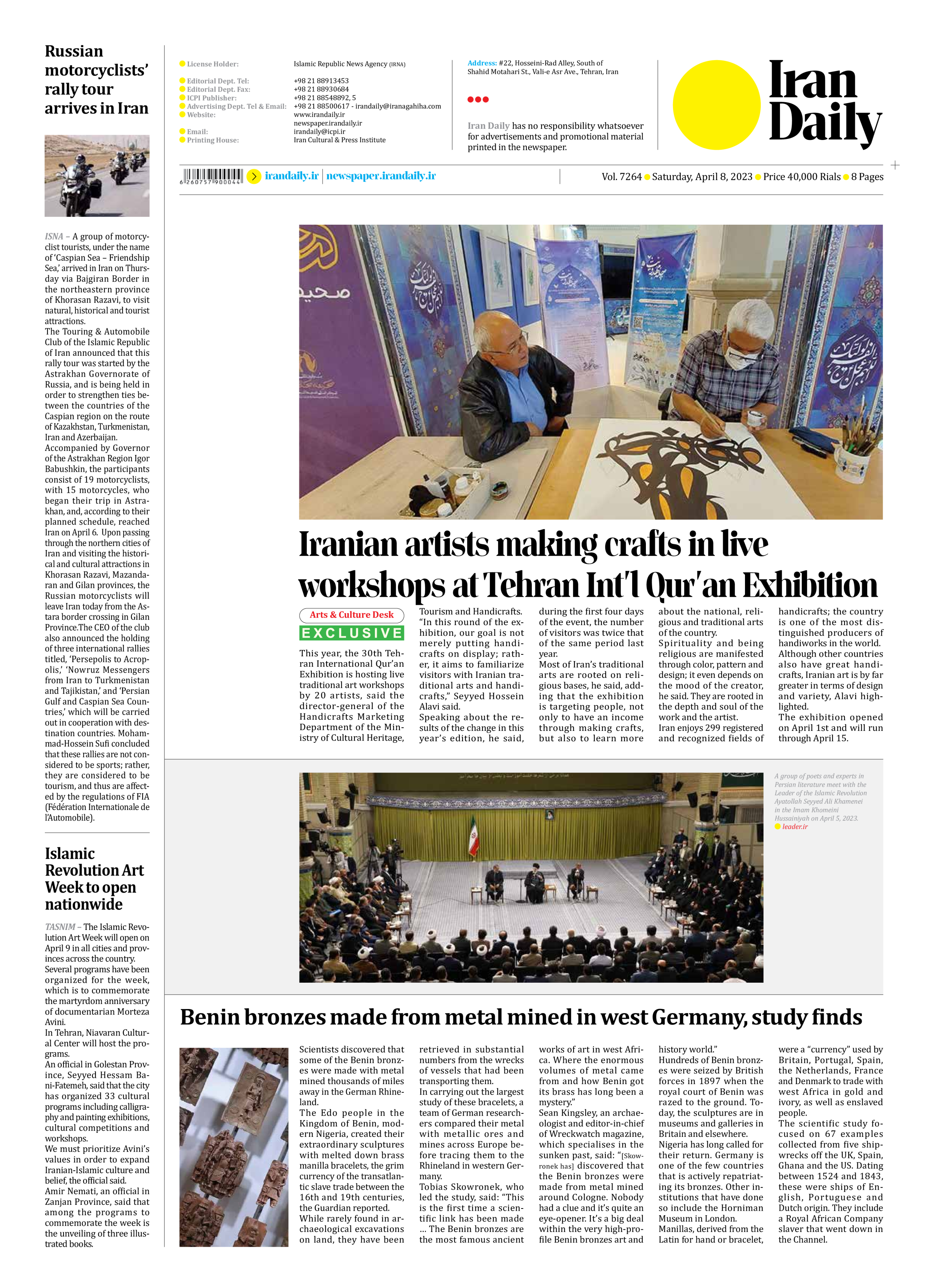
Iranian artists making crafts in live workshops at Tehran Int’l Qur’an Exhibition
This year, the 30th Tehran International Qur’an Exhibition is hosting live traditional art workshops by 20 artists, said the director-general of the Handicrafts Marketing Department of the Ministry of Cultural Heritage, Tourism and Handicrafts.
“In this round of the exhibition, our goal is not merely putting handicrafts on display; rather, it aims to familiarize visitors with Iranian traditional arts and handicrafts,” Seyyed Hossein Alavi said.
Speaking about the results of the change in this year’s edition, he said, during the first four days of the event, the number of visitors was twice that of the same period last year.
Most of Iran’s traditional arts are rooted on religious bases, he said, adding that the exhibition is targeting people, not only to have an income through making crafts, but also to learn more about the national, religious and traditional arts of the country.
Spirituality and being religious are manifested through color, pattern and design; it even depends on the mood of the creator, he said. They are rooted in the depth and soul of the work and the artist.
Iran enjoys 299 registered and recognized fields of handicrafts; the country is one of the most distinguished producers of handiworks in the world.
Although other countries also have great handicrafts, Iranian art is by far greater in terms of design and variety, Alavi highlighted.
The exhibition opened on April 1st and will run through April 15.







